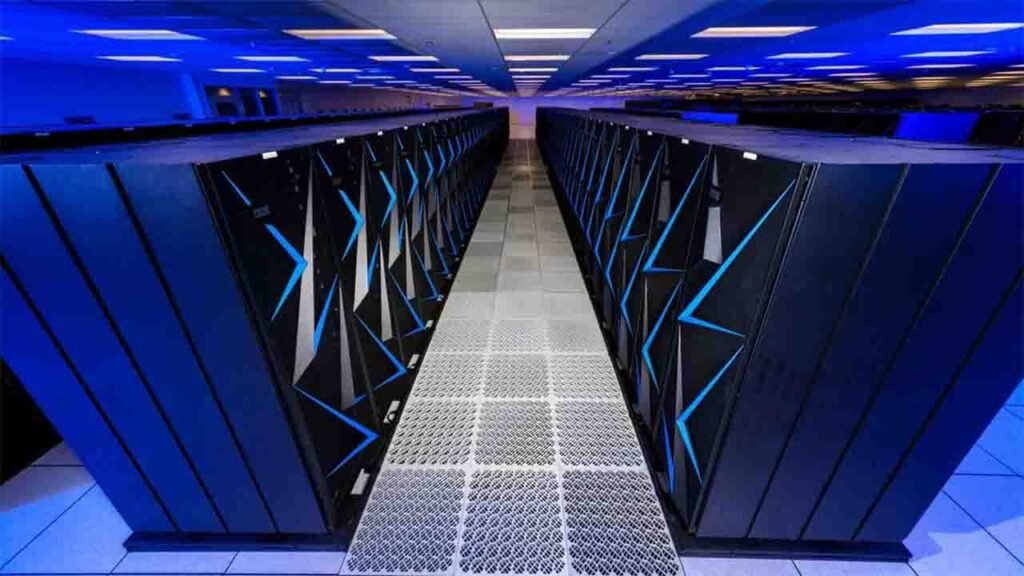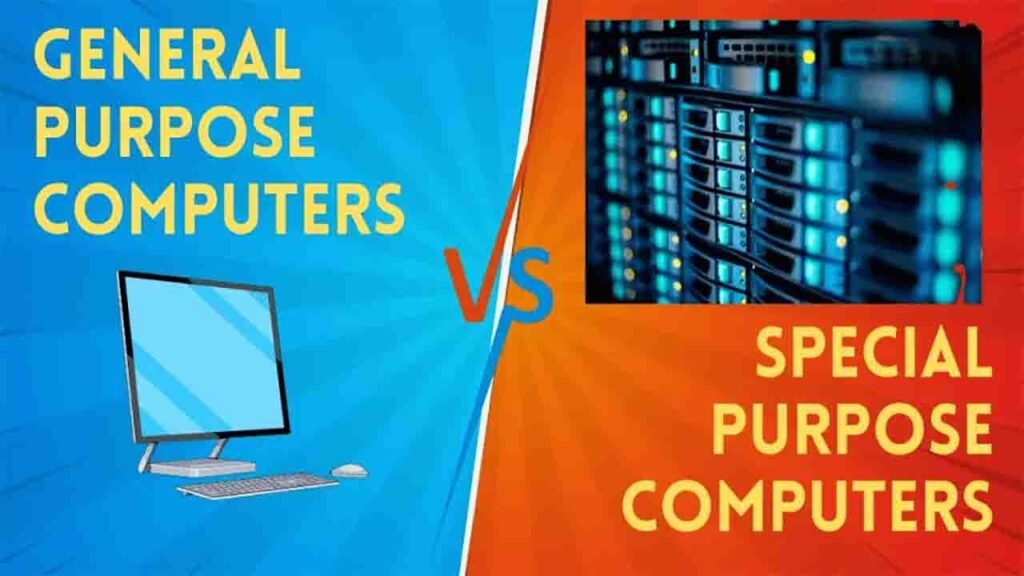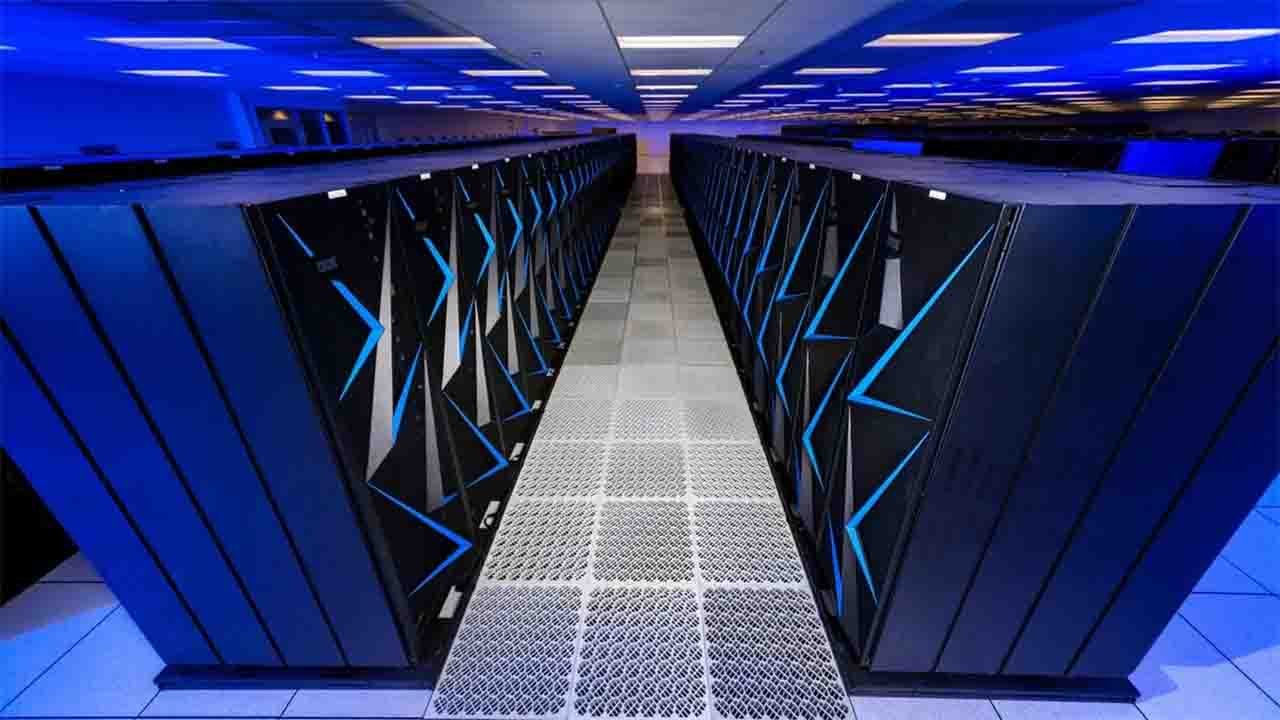A supercomputer is a computer with exceptionally high computing power compared to a typical desktop or laptop computer. They are designed to handle very complex and demanding computational tasks that require massive amounts of processing power, memory, and storage capacity.
Supercomputers are used in a variety of fields, such as scientific research, weather forecasting, engineering, cryptography, and artificial intelligence. They can perform calculations at incredible speeds and handle massive amounts of data, making them essential for many advanced computational tasks.
Supercomputers are typically made up of thousands of processors that work together in parallel to solve complex problems. They also require specialized cooling systems to prevent overheating due to the immense amount of energy they consume. The most powerful supercomputers can perform trillions of calculations per second and have hundreds of thousands of cores.
Introduction

A supercomputer is a powerful computer that is designed to perform complex calculations and tasks at an extremely high speed. It is capable of processing massive amounts of data and performing millions or even billions of calculations per second.
Supercomputers are used in a variety of fields such as scientific research, weather forecasting, financial modeling, cryptography, and aerospace engineering. They are also used for simulating complex physical processes, designing new drugs, analyzing large datasets, and developing advanced artificial intelligence and machine learning algorithms.
Supercomputers typically consist of thousands of interconnected processors, which work together to perform calculations in parallel. They also have large amounts of high-speed memory and storage, as well as specialized hardware components such as GPUs (Graphics Processing Units) for performing complex mathematical operations.
Supercomputers are typically very expensive to build and maintain, and require specialized expertise to operate. They are often housed in dedicated facilities or data centers and require specialized cooling and power systems to prevent overheating.
History of supercomputing
The term supercomputing arose in the late 1920s in the United States in response to the IBM tabulators at Columbia University. The CDC 6600, released in 1964, is sometimes considered the first supercomputer. However, some earlier computers were considered supercomputers for their day such as the 1960 UNIVAC LARC, the IBM 7030 Stretch, and the Manchester Atlas, both in 1962—all of which were of comparable power; and the 1954 IBM NORC.
While the supercomputers of the 1980s used only a few processors, in the 1990s, machines with thousands of processors began to appear both in the United States and in Japan, setting new computational performance records.
By the end of the 20th century, massively parallel supercomputers with thousands of “off-the-shelf” processors similar to those found in personal computers were constructed and broke through the teraflop computational barrier.
Progress in the first decade of the 21st century was dramatic and supercomputers with over 60,000 processors appeared, reaching petaflop performance levels.
Features of Supercomputer
• They have more than one CPU (Central Processing Unit) which contains instructions so that it can interpret instructions and execute arithmetic and logical operations.
• The supercomputer can support extremely high computation speed of CPUs.
• They can operate on pairs of lists of numbers instead of pairs of numbers.
• They were used initially in applications related to national security, nuclear weapon design, and cryptography. But nowadays they are also employed by the aerospace, automotive, and petroleum industries.
How did Supercomputers work?
Supercomputers work by combining thousands or even millions of computing cores to perform complex calculations at an extremely high speed. The basic architecture of a supercomputer includes a large number of processing units, a high-speed interconnect, and a large amount of memory and storage.

The processing units in a supercomputer can be either CPUs (Central Processing Units) or GPUs (Graphics Processing Units). CPUs are general-purpose processors that can handle a wide range of tasks, while GPUs are optimized for performing large-scale mathematical calculations in parallel. Supercomputers may also use specialized processors, such as ASICs (Application-Specific Integrated Circuits) or FPGAs (Field-Programmable Gate Arrays), for specific tasks.
The high-speed interconnect is used to connect all the processing units in the supercomputer, allowing them to communicate and share data quickly and efficiently. This interconnect can be either a high-speed network or a custom-designed system, depending on the specific requirements of the supercomputer.
Supercomputers also have a large amount of memory and storage to handle the massive amounts of data that they process. The memory is used to store data that is currently being processed, while the storage is used to hold the data and programs that the supercomputer will work on.
To use a supercomputer, users typically write programs in specialized programming languages such as Fortran, C, or C++, that are optimized for parallel computing. These programs are then compiled and run on the supercomputer, taking advantage of the massive processing power and high-speed interconnect to perform complex calculations and simulations.
Overall, supercomputers work by combining massive amounts of processing power, high-speed interconnects, and specialized hardware and software to perform complex calculations and simulations at an unprecedented speed and scale.
Differences between General-Purpose Computers and Special-Purpose Computers (Supercomputers)

There are several key differences between general-purpose computers and supercomputers, including:
- Processing Power: Supercomputers are designed to handle complex and intensive computational tasks that are beyond the capabilities of general-purpose computers. Supercomputers can perform billions of calculations per second, while general-purpose computers typically perform millions of calculations per second.
- Parallel Processing: Supercomputers are designed to handle large amounts of data and perform computations in parallel, using thousands or even millions of processing cores working together to solve complex problems. General-purpose computers typically have only a few processing cores and are optimized for handling a variety of tasks, rather than processing large amounts of data in parallel.
- Specialized Hardware: Supercomputers often use specialized hardware components, such as GPUs, FPGAs, and ASICs, to perform specific tasks, such as mathematical calculations, image and video processing, and machine learning. General-purpose computers typically use standard hardware components that are optimized for a wide range of tasks.
- Cost: Supercomputers are expensive to build and maintain, with costs running into the tens or even hundreds of millions of dollars. General-purpose computers, on the other hand, are more affordable and accessible to individuals and small businesses.
- Applications: Supercomputers are used in a wide range of scientific and engineering applications, such as climate modeling, drug discovery, aerospace design, and financial modeling. General-purpose computers are used for a variety of applications, including office productivity, gaming, social media, and internet browsing.
Overall, supercomputers are designed to handle complex and data-intensive applications that require massive amounts of processing power and parallel processing capabilities. General-purpose computers, on the other hand, are optimized for a wide range of tasks and are more affordable and accessible to a wider range of users.
Some top supercomputers of the last two decades
| Year | Supercomputer | Peak speed (Rmax) | Location |
| 2021 | Sunway Oceanlite | 1.05 exaFLOPS (unofficial) | Qingdao, China |
| 2021 | Fujitsu Fugaku | 442 PFLOPS | Kobe, Japan |
| 2018 | IBM Summit | 148.6 PFLOPS | Oak Ridge, Tenn. |
| 2018 | IBM Sierra | 94.6 PFLOPS | Livermore, Calif. |
| 2016 | Sunway TaihuLight | 93.01 PFLOPS | Wuxi, China |
| 2013 | NUDT Tianhe-2 | 33.86 PFLOPS | Guangzhou, China |
| 2012 | Cray Titan | 17.59 PFLOPS | Oak Ridge, Tenn. |
| 2012 | IBM Sequoia | 17.17 PFLOPS | California, USA |
| 2011 | Fujitsu K computer | 10.51 PFLOPS | Kobe, Japan |
| 2010 | NUDT Tianhe-1A | 2.566 PFLOPS | Tianjin, China |
| 2009 | Cray Jaguar | 1.759 PFLOPS | Oak Ridge, Tenn. |
| 2008 | IBM Roadrunner | 1.105 PFLOPS | Los Alamos, N.M. |
Supercomputers and artificial intelligence
Supercomputers play a critical role in advancing artificial intelligence (AI) research and development. AI requires vast amounts of data to be processed and analyzed, as well as complex mathematical models and algorithms to be developed and refined. Supercomputers are uniquely suited to handle these requirements due to their massive computational power and ability to perform parallel processing.
Supercomputers often run artificial intelligence (AI) programs because they typically require supercomputing-caliber performance and processing power. Supercomputers can handle the large amounts of data that AI and machine learning application development use.
Some supercomputers are engineered specifically with AI in mind. For example, Microsoft custom-built a supercomputer to train large AI models that work with its Azure cloud platform. The goal is to provide developers, data scientists, and business users with supercomputing resources through Azure’s AI services. One such tool is Microsoft’s Turing Natural Language Generation, which is a natural language processing model.
Another example of a supercomputer engineered specifically for AI workloads is Nvidia’s Perlmutter. It is No. 5 in the most recent TOP500 list of the world’s fastest supercomputers. It contains 6,144 GPUs and will be tasked with assembling the largest-ever 3D map of the visible universe. To do this, it will process data from the Dark Energy Spectroscopic Instrument, a camera that captures dozens of photos per night containing thousands of galaxies.
Supercomputers are used in several AI applications, including:
- Deep Learning: Supercomputers are used to train deep learning models, which are a type of AI algorithm that can learn from vast amounts of data. Deep learning requires massive amounts of data to be processed and analyzed, which can be done more efficiently using supercomputers.
- Natural Language Processing: Supercomputers are used to process and analyze large amounts of text data, such as speech recognition and machine translation, which are key components of natural language processing.
- Computer Vision: Supercomputers are used to analyze and interpret visual data, such as images and videos, which are critical for computer vision applications such as facial recognition and autonomous driving.
- Robotics: Supercomputers are used to simulate complex physical systems, such as robotic arms and drones, to optimize their performance and reduce development time and costs.
Overall, supercomputers are essential for advancing AI research and development, enabling researchers to process and analyze vast amounts of data, optimize complex algorithms and models, and simulate complex physical systems. With the continued growth of AI applications in various fields, supercomputers will play an increasingly important role in shaping the future of AI.
The future of supercomputers
The supercomputer and high-performance computing (HPC) market is growing as more vendors like Amazon Web Services, Microsoft, and Nvidia develop their own supercomputers. HPC is becoming more important as AI capabilities gain traction in all industries from predictive medicine to manufacturing. Hyperion Research predicted in 2020 that the supercomputer market will be worth $46 billion by 2024.
The current focus in the supercomputer market is the race toward exascale processing capabilities. Exascale computing could bring about new possibilities that transcend those of even the most modern supercomputers. Exascale supercomputers are expected to be able to generate an accurate model of the human brain, including neurons and synapses. This would have a huge impact on the field of neuromorphic computing.
As computing power continues to grow exponentially, supercomputers with hundreds of exaflops could become a reality.
Supercomputers are becoming more prevalent as AI plays a bigger role in enterprise computing. Learn the top nine applications of AI in business and why businesses are using AI.
The future of supercomputers is very exciting, as advances in technology are enabling these systems to become even more powerful and capable. Here are some of the key trends and developments that are shaping the future of supercomputers:
- Exascale Computing: The next major milestone in supercomputing is achieving exascale computing, which refers to the ability to perform a billion billion calculations per second. Several countries and organizations are working on exascale supercomputers, which are expected to become operational in the next few years.
- AI Integration: As mentioned earlier, supercomputers are already playing a critical role in advancing artificial intelligence, and this trend is expected to continue in the future. Supercomputers will be increasingly used for developing and training more complex and sophisticated AI models, as well as for processing and analyzing vast amounts of data.
- Quantum Computing: Quantum computing is a new type of computing that uses quantum bits (qubits) to perform calculations. While still in the early stages of development, quantum computing has the potential to revolutionize computing and could eventually surpass the capabilities of traditional supercomputers.
- Edge Computing: Edge computing refers to the processing of data at or near the source of the data, rather than sending it to a centralized location such as a supercomputer. This approach can enable real-time processing and analysis of data, which is critical for applications such as autonomous vehicles, smart cities, and the Internet of Things.
- Interconnects and Storage: As supercomputers become more powerful, the interconnects and storage systems used to connect the processing nodes and store data will also need to improve. New technologies, such as high-speed optical interconnects and advanced storage architectures, are being developed to meet these requirements.
Overall, the future of supercomputers is very promising, with continued advances in processing power, AI integration, quantum computing, edge computing, and storage technologies. These developments will enable supercomputers to tackle even more complex and data-intensive applications and drive innovation in science, engineering, medicine, and other fields.
Computer – KnowledgeSthali

